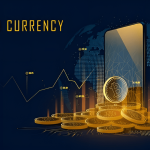The global financial landscape is undergoing one of the most profound transformations in modern history. The rise of cryptocurrency has ignited a market metamorphosis—a complete redefinition of how people view, store, and grow wealth. What started as a fringe technological experiment has evolved into a force reshaping banking systems, investment strategies, and even government policies. Today, crypto isn’t merely a buzzword—it’s a movement redefining global wealth, decentralizing power, and democratizing financial access for millions worldwide.
The Dawn of Digital Currency
To understand the transformation, we must go back to the beginning. When Bitcoin emerged in 2009, it wasn’t just another digital invention—it was a response to a failing system. The world had just witnessed a devastating financial crisis, exposing the fragility and corruption within traditional banking. Bitcoin’s anonymous creator, Satoshi Nakamoto, envisioned a currency free from government manipulation—a decentralized form of money powered by technology rather than trust.
At first, few took it seriously. Critics called it a fad, a fantasy, or worse—a fraud. But beneath the skepticism, Bitcoin held something revolutionary: trustless value exchange. It introduced the concept of blockchain—a transparent, immutable digital ledger that records every transaction. No middlemen. No central authority. No bias.
That foundation gave birth to an entire ecosystem of cryptocurrencies—Ethereum, Binance Coin, Solana, and thousands more—each bringing unique innovations that extended far beyond money.
Decentralization: The Power Shift
At the heart of crypto’s metamorphosis lies decentralization—a redistribution of financial power. For centuries, wealth has been controlled by a handful of institutions: banks, governments, and multinational corporations. They acted as gatekeepers, deciding who gets access to credit, investment, or opportunity.
Crypto broke that gate.
Through blockchain technology, anyone with an internet connection can participate in the global economy. You don’t need a bank account, credit score, or government approval to own digital assets. A farmer in Kenya, a student in India, or a freelancer in Argentina can all join the same financial network as a Wall Street investor.
This shift is monumental. It challenges centuries of centralized control and gives rise to what many call financial sovereignty—the ability to own and move wealth independently.
The Rise of a New Asset Class
Cryptocurrency has redefined the very concept of value. In traditional finance, wealth was measured in tangible assets—real estate, gold, cash, or stocks. Crypto introduced a new digital asset class that operates 24/7, borderless, and highly liquid.
Bitcoin became known as digital gold, prized for its scarcity and resistance to inflation. Ethereum evolved into the foundation for decentralized finance (DeFi), powering smart contracts and decentralized applications that mimic—and often outperform—traditional financial services.
Today, there are entire economies built on blockchain. People lend, borrow, trade, and earn interest through protocols rather than banks. Non-fungible tokens (NFTs) have transformed art and ownership, allowing creators to monetize their work globally without intermediaries. Even real-world assets like property and stocks are being tokenized—fractionalized into blockchain-based shares, making high-value investments accessible to everyone.
The Wealth Revolution: From Wall Street to Main Street
In traditional markets, wealth creation was often reserved for the privileged few—those with access to capital, insider information, or institutional support. Crypto shattered that model by allowing anyone to invest, trade, and grow wealth from their smartphone.
The impact has been profound. In 2020 and 2021, a wave of new investors flooded the market, many from developing nations. For the first time, individuals could participate in a financial revolution without needing a bank or broker. The result? A massive redistribution of opportunity.
Communities once excluded from the global economy now hold financial assets worth billions. Entire economies—from El Salvador to Nigeria—have embraced crypto as a way to stabilize and grow national wealth.
This democratization of finance has redefined what it means to be wealthy. It’s no longer about having access to exclusive systems—it’s about participating in open ones.
DeFi: The New Financial Frontier
Decentralized Finance (DeFi) represents the next phase of this market metamorphosis. Built on blockchain networks like Ethereum, DeFi replaces traditional intermediaries—banks, exchanges, and lenders—with smart contracts that execute automatically when conditions are met.
Through DeFi, users can:
- Earn interest by lending crypto assets.
- Borrow funds without credit checks.
- Trade tokens on decentralized exchanges (DEXs).
- Invest in liquidity pools that generate passive income.
This ecosystem operates transparently, governed by code rather than corporations. It’s a self-sustaining economy where trust is replaced by mathematics, and access is universal.
While still in its infancy, DeFi already holds tens of billions in total value. Its rapid growth shows the appetite for an open, programmable financial system that empowers users instead of exploiting them.
Crypto and the Global Economy
The ripple effects of crypto are being felt across industries and governments. Central banks are now exploring CBDCs—Central Bank Digital Currencies—as they realize the need to modernize money itself. Countries like China, the Bahamas, and Sweden have already launched digital versions of their currencies, blending state control with blockchain efficiency.
Meanwhile, corporations are integrating crypto into their balance sheets. Tesla, PayPal, and Square (now Block) have paved the way for mainstream adoption. Even traditional banks, once dismissive of crypto, are now building blockchain-based services.
The global economy is shifting from analog to digital—an inevitable evolution that crypto has accelerated. Cross-border payments are faster. Remittances are cheaper. And capital can move freely without bureaucratic barriers.
For emerging markets, this is especially powerful. Crypto offers a lifeline against inflation, currency devaluation, and political instability. It gives citizens control over their savings in places where trust in government or banks is weak.
Challenges on the Road to Maturity
Of course, no revolution is without resistance. Crypto faces its share of challenges—volatility, regulation, and security remain constant concerns. Governments worry about money laundering, tax evasion, and the loss of monetary control. Investors fear market manipulation and scams.
Volatility, while offering opportunities for profit, also introduces risk. Prices can swing wildly, wiping out fortunes overnight. For crypto to mature, it must balance freedom with stability—a challenge the industry continues to face.
Regulation is another double-edged sword. While too much oversight could stifle innovation, a lack of it invites chaos. The key lies in creating frameworks that protect consumers without undermining decentralization.
Yet despite these hurdles, the crypto ecosystem continues to evolve. Each market crash has sparked stronger systems, smarter investors, and more robust technology.
The Human Side of Crypto Wealth
Beyond charts and numbers, crypto’s true revolution is human. It’s about empowerment—giving people control over their financial destiny.
In regions where traditional banking excludes millions, crypto wallets serve as a passport to global finance. In places ravaged by hyperinflation, digital currencies offer stability. For creators and freelancers, crypto provides a new way to earn and get paid across borders.
Wealth, once defined by access and privilege, is being reimagined through community, creativity, and collaboration. Decentralized Autonomous Organizations (DAOs) let people collectively fund projects and share profits. Blockchain-based microloans support small entrepreneurs in developing nations. NFTs reward artists directly for their work, cutting out exploitative middlemen.
This human dimension of crypto—the inclusion, innovation, and empowerment—is what truly sets it apart from past financial revolutions.
The Future of Global Wealth
As we move deeper into the digital age, the line between traditional and crypto finance will continue to blur. Tokenization of assets, blockchain-based identities, and AI-driven smart contracts will merge into a seamless global economy where wealth flows as freely as information.
In this future, banks may act as custodians of digital assets rather than lenders. Governments may issue programmable currencies that automate taxes or welfare. Investors might hold diversified portfolios blending real-world and digital assets.
But perhaps the most exciting part is that the next billion participants in this economy won’t come from Wall Street—they’ll come from the streets of Lagos, Manila, São Paulo, and Dhaka. They’ll represent a new class of digital citizens redefining what it means to be wealthy, not through accumulation, but through access.
Conclusion: The New Wealth Paradigm
The market metamorphosis we’re witnessing isn’t just financial—it’s cultural, technological, and philosophical. Crypto is more than an investment; it’s a movement reshaping the very fabric of wealth creation and distribution.
In this new paradigm, wealth is no longer measured solely in dollars or gold—but in data, decentralization, and digital ownership. The power once held by a few is now being shared among many. The future of global wealth will be open, borderless, and inclusive—a world where anyone, anywhere, can participate and prosper.
The metamorphosis has begun. And it’s not slowing down.









